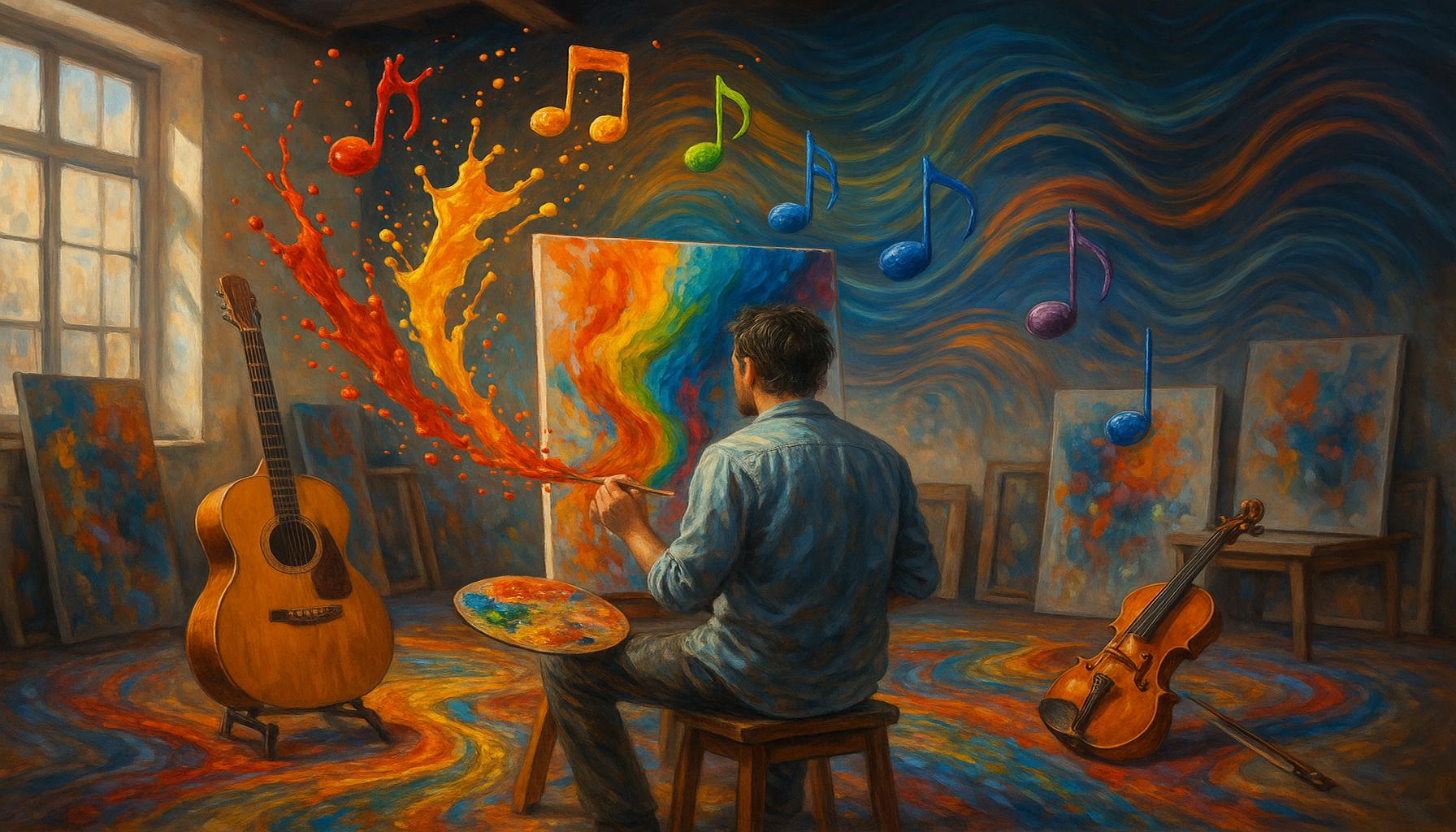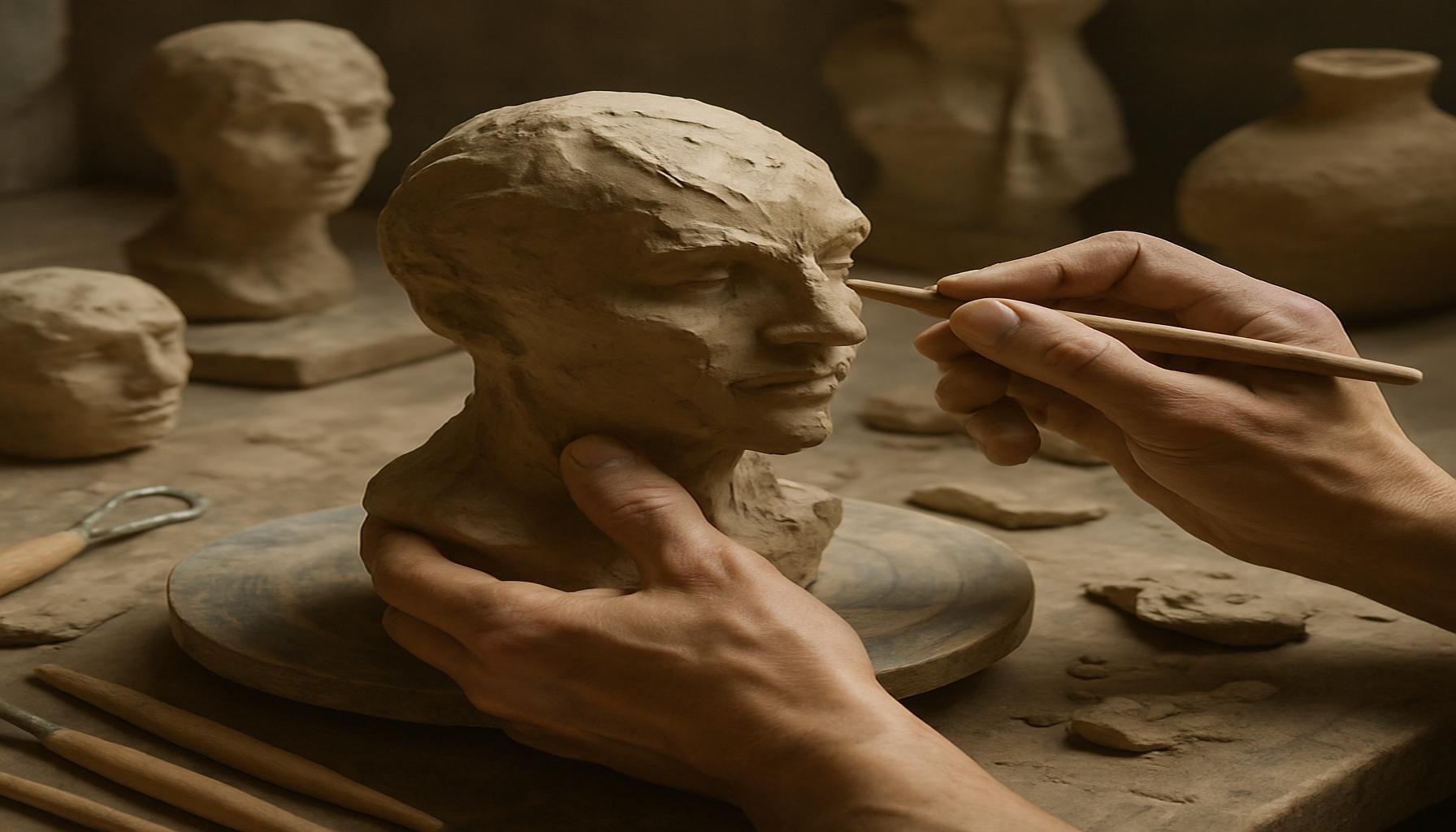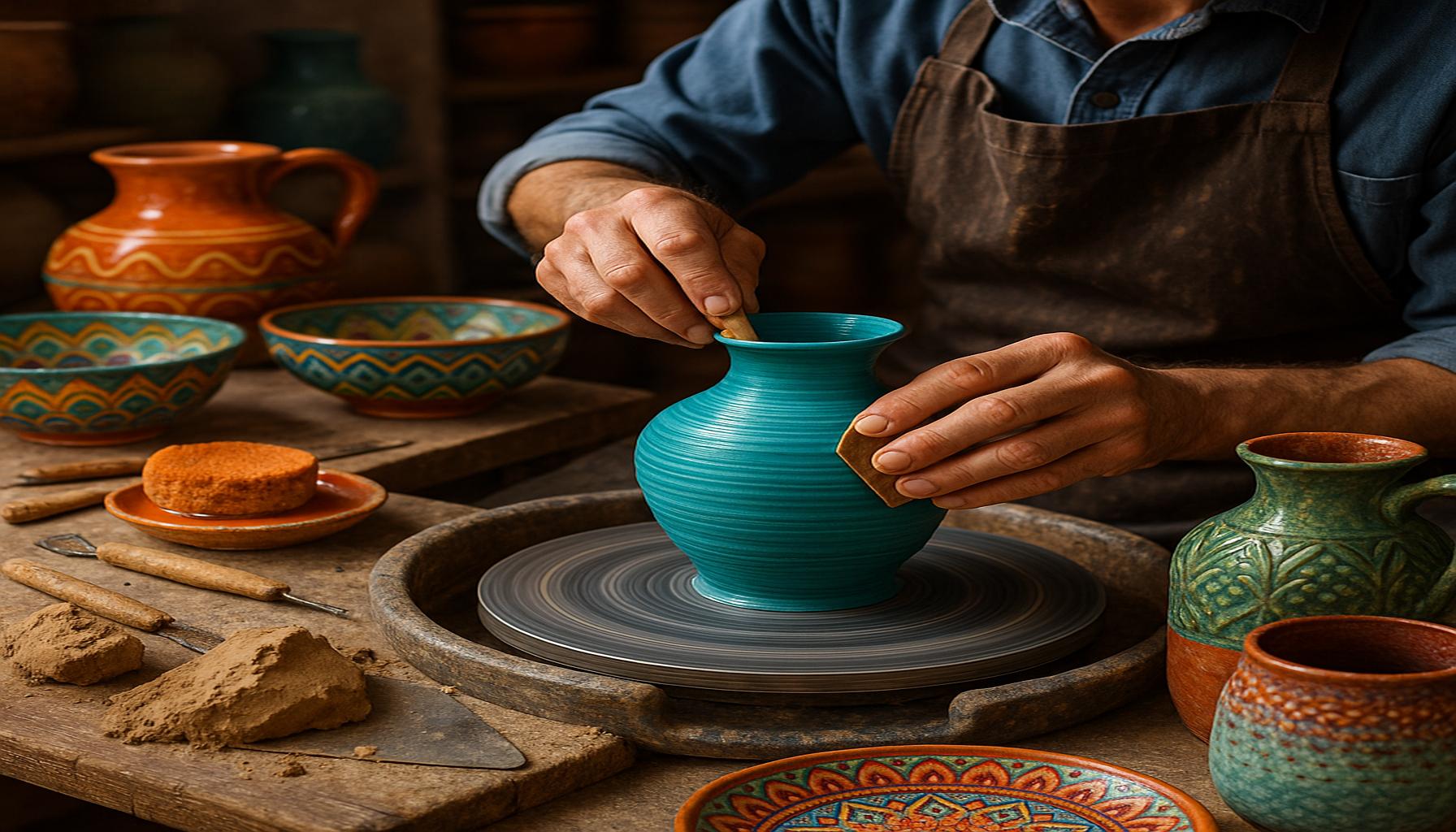Music and Painting: The Synesthesia Between Sound and Color in Artistic Creation

Unraveling the Connection Between Music and Visual Arts
The relationship between music and painting invites a captivating exploration of how two distinct mediums can intertwine to create profound and evocative experiences. At the heart of this synergy lies the concept of synesthesia, a neurological phenomenon where stimulation of one sensory pathway leads to automatic, involuntary experiences in another sensory pathway. For many artists, this connection allows them to translate the abstract nature of sound into the vivid world of color and form.
Many renowned artists have explicitly recognized and harnessed this connection in their work. For instance, Claude Monet, a pioneer of Impressionism, believed in the emotive power of color. He often claimed that colors could evoke feelings akin to musical tones, using dynamic brush strokes to reflect the play of light and movement, capturing the essence of a moment much like a musical composition. Each color in his paintings can remind viewers of a specific melody or mood, forging an emotional bridge between sound and sight.
Wassily Kandinsky, a titanic figure in abstract art, articulated his views on the influence of music on visual art with great enthusiasm. He frequently structured his paintings as a composer would arrange a symphony, employing geometrical shapes and vibrant palettes to reflect musical notes. Kandinsky, who played the piano, believed that colors corresponded to sounds, asserting that specific hues could evoke particular emotional responses. This belief is reflected in works such as “Composition VII,” where the frenetic energy of music finds parallel expression in his use of color and form.
Jackson Pollock took this idea a step further with his unique drip painting technique, which mirrors the improvisational aspects of jazz music. His spontaneous application of paint onto canvas evokes the sense of rhythm and freedom found in jazz, effectively blurring the lines between auditory and visual experiences. Viewing a Pollock painting can be akin to listening to a thrilling jazz performance—each drip and splash contributes to a dynamic, unfolding narrative that resonates deeply with the viewer.
Artists experiencing synesthesia often see music as a cascade of colors or shifting patterns, bringing an unprecedented innovation to their work. This sensory intertwining enhances their artistic vocabulary, allowing them to express complex emotions and concepts that engage viewers on multiple levels. The dialogue between sound and visual storytelling challenges us to consider how these elements can coalesce to enhance our understanding and appreciation of art.

As we delve deeper into the intricate relationships between music and painting, we uncover the rich layers of synesthetic experiences that highlight their profound influence on the art world. Join us on this journey to discover how the harmonious fusion of sound and color continues to inspire contemporary artists and viewers alike, urging us to engage our senses in new and exciting ways.
DISCOVER MORE: Click here to dive into watercolor techniques
The Language of Colors and Sounds
At the intersection of music and painting lies a rich tapestry of sensory experiences that reveal the interconnectedness of art forms. This unique relationship allows for a profound expression of human emotion and creativity through synesthetic experiences. When artists meld sound and color, they create more than just visual spectacles or auditory delights; they invite audiences to participate in a multisensory journey that engages the mind and heart simultaneously.
The notion of color and sound symbiosis is not new; it has intrigued thinkers and creators for centuries. Ancient philosophers, such as Aristotle and Plato, pondered the connections between different sensory modalities, positing that harmony exists among the arts. This concept found fertile ground in the 20th century when a surge of synesthetic inquiry emerged alongside advancements in psychology and neuroscience.
Artists have long sought to translate the abstract qualities of sound into the visual realm. While the idea of synesthesia suggests a blending of senses, it also highlights the distinct ways in which each artist interprets and presents their personal experiences. Here are some examples of how various artists have embodied sound in their paintings:
- Paul Klee often likened his compositions to musical scores, utilizing shapes and colors that resonated with the sounds he experienced. He believed that each brushstroke could evoke a song, creating a visual symphony on the canvas.
- Henri Matisse utilized strong, vibrant colors to convey emotion, mimicking the crescendos and decrescendos typical in music. His bold application of color often parallels musical rhythms, creating a sense of movement that mirrors orchestral dynamics.
- Pablo Picasso, known for his innovative approach to form, drew inspiration from the emotionally charged sounds of his time. His Blue Period reflects the somber melodies he associated with music, while his works of later years exhibit a more joyous palette, illustrating a shift in musical influence.
Moreover, contemporary artists have embraced technology to enhance their exploration of sound and color fusion. Many engage with digital media to create immersive environments where visual and auditory elements converge, allowing viewers to experience art through a synesthetic lens. Installations that combine live music with visual projections highlight the growing interest in interactive experiences that redefine traditional artistic boundaries.
The dialogue between sound and color not only enriches the artistic repertoire but also prompts spectators to reflect on their own perceptions. As we endeavor to comprehend the visual manifestations of musical influences, we start to appreciate the emotional depth and complexity that emerges from such artistic fusion.
In the following sections, we will further investigate how this synesthetic connection has shaped modern artistic practices and the implications it holds for future generations of artists and audiences alike. The journey into the realm of music and painting promises to illuminate the captivating ways in which these two worlds coalesce, urging us to listen with our eyes and see with our ears.
| Advantage | Explanation |
|---|---|
| Enhanced Creativity | Musicians and painters often experience heightened levels of creativity by merging sound and color, leading to unique expressions in their artwork. |
| Multi-Sensory Experience | Engaging multiple senses not only deepens emotional engagement but also enhances the audience’s appreciation of both the auditory and visual arts. |
The intertwining of music and painting offers a profound exploration into how different senses can influence one another. Artists, like Wassily Kandinsky, were known to perceive music through colors, believing that each sound corresponded to a specific hue. This phenomenon, known as synesthesia, allows some individuals to naturally convert auditory stimuli into visual forms, creating artworks that resonate on both sound and color levels.In modern artistic practices, the collaborative efforts between musicians and visual artists further showcase the benefits of synesthetic experiences. Through installations that blend visual compositions with musical scores, audiences can explore an immersive experience that transcends traditional boundaries. The combination of these disciplines enriches not only the creators’ palette but also provides deeper insight into the philosophical implications of art itself, as both mediums seek to evoke emotion and provoke thought. Furthermore, the use of technology aids in these artistic explorations; software and applications designed to translate sounds into colors or visuals play an increasingly important role in artistic creation. These tools serve to democratize the artistic process, allowing more individuals to experience and express the synesthetic bond between sound and color. As artists continue to break down barriers within creative processes, the relationship between music and painting will undoubtedly evolve, igniting curiosity and paving the way for future innovations in the realm of artistic expression.
DISCOVER MORE: Click here to learn how improvisation can enhance your creativity
The Synesthetic Connection in Modern Art
The relationship between music and painting has evolved significantly, particularly in the context of modern art. The 20th and 21st centuries have seen a remarkable integration of various artistic elements, where traditional boundaries are frequently blurred, and the influence of one medium over another is more pronounced than ever. Contemporary artists harness technology, innovative materials, and immersive experiences to deep dive into the synesthetic dialogue that exists between sound and color.
One notable avenue for exploration is the world of multimedia installations. Artists like Olafur Eliasson and Ryoji Ikeda create spaces where soundscapes and visual elements interact, urging audiences to engage their full sensory awareness. Eliasson, known for his installations that utilize light and color, often collaborates with musicians to create experiences that reflect the harmony between visual art and sound. His works invite spectators to experience not just observation, but also profound participation in constructing the art’s meaning.
Ryoji Ikeda, on the other hand, takes a more experimental approach, employing sound frequencies and visual patterns to challenge the perception of color and sound. His installations often utilize precise data visualization and syncopated sound arrangements that can evoke a range of emotional responses. The intricate relationship between sound and visual displays facilitates an examination of abstraction, allowing individuals to experience synesthesia even if they do not naturally possess it. These modern interpretations extend the understanding of how artists can manipulate both auditory and visual mediums to speak to the viewer’s emotions.
Moreover, the rise of virtual reality (VR) technology has opened new avenues for synesthetic exploration in artistic creation. Artists such as Jordan Wolfson and Marina Abramović are pioneering ways to immerse participants in environments where music and visuals exist in harmony, enhancing the overall sensory impact. VR allows for a unique form of storytelling, where users can not only see but also hear and feel as they navigate through the artwork, creating an intimate engagement that transcends traditional viewing experiences.
Another dimension of this connection can be found in the musicians themselves who often transition into the visual arts. David Bowie, for instance, not only revolutionized the music landscape but also ventured into visual arts by collaborating with painters and graphic designers. His album covers, which merged artistic mediums, have become iconic representations of the synesthetic relationship between music and visual aesthetics. By blending his auditory creativity with visual forms, Bowie expanded the conception of artistic expression and demonstrated its limitless boundaries.
Art education is also adjusting to incorporate these synesthetic relationships, encouraging budding artists to explore the intersecting paths of music and painting. Institutions across the United States are increasingly featuring interdisciplinary programs that teach students to think beyond strict artistic classifications. Creative practices that allow for the crossover of sensory experiences are fostering a new generation of artists who may redefine the interaction between sound and color in ways that are yet to be envisioned.
Thus, as we delve deeper into the ramifications of this integration, it becomes clear that the promise of synesthesia in artistic creation is a continually unfolding journey. Artists, educators, and audiences alike are urged to explore the profound emotional resonance of music and painting, traversing the boundaries that have traditionally separated these two vibrant realms of expression.
DISCOVER MORE: Click here to explore sustainable crafting ideas
Conclusion
In conclusion, the exploration of music and painting as intertwined forms of expression reveals a rich tapestry of sensory experience that transcends traditional boundaries. The journey through this synesthetic landscape, shaped by both historical and modern perspectives, underscores the profound connection between sound and color in artistic creation. Contemporary artists have deftly embraced technological advancements and innovative collaborative practices, allowing them to engage audiences with immersive experiences that awaken multiple senses simultaneously.
The impact of multimedia installations, virtual reality, and the collaboration between musicians and visual artists illustrates an evolving narrative where sensory integration fosters a deeper understanding of human emotion and creative expression. As we observe artists such as Olafur Eliasson and Ryoji Ikeda pushing the envelope of creativity, we are reminded of the essential role that interactivity plays in transforming passive observation into an active engagement with art.
Furthermore, the educational landscape is adapting to these developments, paving the way for future generations to explore the dynamic interplay between sound and color. By encouraging interdisciplinary approaches, art institutions are nurturing a vibrant new wave of artists who are poised to redefine the synesthetic experience in ways we have yet to imagine.
As exploration of these dual realms of creativity continues, the boundaries between music and painting will likely continue to blur, inviting audiences to experience art as a holistic interplay of senses. Through this exploration, we gain not only a richer appreciation for these art forms but also a deeper connection to the feelings and emotions they evoke. The journey through the synesthetic connection offers an ongoing invitation to discover innovative ways to blend auditory and visual experiences that resonate with the human spirit.



